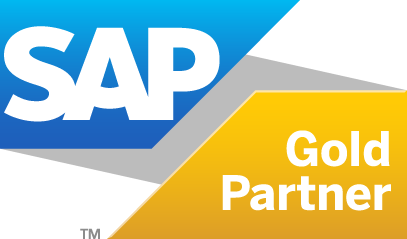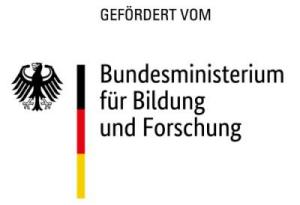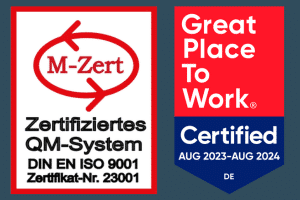The Relevance of Translation Memory for Internationalization
Let’s take a deep dive into the topic of Translation Memory and its relevance in the internationalization process, namely translation and transliteration, in this article by QUANTO Solutions.
Discover how a translation memory works, why it is relevant, and how it can help your business in the localization process and therefore doing business successfully around the world.
What is a Translation Memory?
To begin with, a translation memory or TM is a database that contains text information (sentences, phrases, whole paragraphs) that has been previously translated.
Each entry is a “translation unit” which includes a source text in the original language and its translated target text. Every translation unit is stored in the database/memory, which can be recalled for future translations.
Translation memories (“TM”) are widely used together with machine translation software, word processing programs, terminology management systems, and multilingual dictionaries.
When users create new content, translation software using translation memory automatically provides identical translations (exact matching) or similar translations (fuzzy matching) in real-time.
Advantages of Using a Translation Memory (TM)
Nowadays, working without a TM is not an option for the vast majority of professional translators. Using a TM makes the translation process faster and more efficient and improves the quality and consistency. It ensures that the whole text is translated as it will show possible gaps. Finally, using a TM reduces costs in the long run.
Translation memories work best for standardized and repetitive texts, such as technical and product manuals, support portals, software localization, legal and financial content, and e commerce store content. A TM is less suitable for creative texts such as literature.
For companies doing business worldwide, a translation memory also becomes relevant in the international localization process.
A Short Recap: Translation vs. Transliteration
In short, translation allows you to understand the meaning of words in another language. On the other hand, transliteration helps to write and pronounce it, which is needed for different scripts, e.g. Latin, Arabic, Chinese, Russian.
Here’s an example:
The Japanese company 三菱 could be read as “three” (三) and “water chestnuts” (菱) if simply translated. This doesn’t give us much information. However, if we apply transliteration, 三菱 becomes Mitsubishi, Japan’s largest trading company.
Application in Machine Translation Software
The technique of a translation memory is basically using a dictionary as a mapping. It is used by renowned machine translation software companies as a program that runs in the background as part of the translation and transliteration process.
Among the most popular software tools are
- free cloud-based (online) translation software tools: Smartcat, MateCat, Wordfast Anywhere
- paid cloud-based (online) translation software tools: Memsource, Wordbee, XTM Cloud
- free desktop (offline) translation software: OmegaT, CafeTran Espresso,
- paid desktop (offline) translation software: SDL Trados Studio, memoQ, Wordfast (Classic & Pro), Memsource, Déjà Vu, Across
Alternatively, companies can also use a simple database or table/list with a mapping that contains the necessary translations for their business. As long as it can be edited (updated, modified, deleted), whether a company uses a simple table or more elaborate software depends on their specific needs.
The offline functions of a TM typically include import, analysis, textual parsing, linguistic parsing, segmentation, alignment, term extraction, and export.
On the other hand, the online functions of a TM generally include retrieval, exact match, in-context exact (ICE) match or guaranteed match, fuzzy match, concordance, updating, automatic translation, automatic retrieval, automatic substitution, networking, text memory, translation memory.
Translation Memory in the Translation/Transliteration Process
Let’s take a look at the process of (machine) translation and transliteration at QUANTO Solutions:
- First, the software checks the global translation memory for unique translations. The global TM is filled, updated, and edited by QUANTO Solutions, and is suitable for standardized recurring strings.
- If the string cannot be found in the global TM, the software checks the individual translation memory for the string. The individual translation memory is more tailored to the specific language and industry terms of a specific client by QUANTO Solutions. The individual TM can be either administered by QUANTO Solutions or the client directly via a user interface.
- If the string cannot be identified clearly, transliteration will be applied.
Let’s look at another example in Chinese.
For the term 林先生, the translation memory first checks the database. There, it will find “Mister” for 先生, but no translation for 林. Any time, a string is not found in the TM, it will be transliterated. Therefore, 林 will be transliterated to “Lin”. So, the full string 林先生 resolves to “Mister Lin”.
Limitations of a Translation Memory
The limitations of a TM are related to those of machine translation with the main challenge being that the overall focus of automatic translation is still on standardized texts and formal language. Besides, named entities and when a word or an expression has more than one meaning depending on the context can pose a challenge in computer-assisted translation (CAT tools).
Moreover, the TM should be customized to the individual needs of a company to achieve the best results. Some file formats may not be supported (yet) and the initial costs may scare off smaller companies as it is a long-term investment. Plus, translation memory databases still often need to be maintained manually to keep high quality.
Finally, a standard translation memory is not (yet) capable of transliteration and transcription as part of the internationalization and localization process. QUANTO Solutions closes this gap with its extensive QUANTO Transliteration Center (QTC).
Translation Memory and Internationalization
The QTC has implemented a number of different translation memories, including Asian, Russian, and Arabic scripts. This allows modifications for translation and transliteration based on the very specific and individual needs of the respective business client.
Therefore, the QTC easily enables businesses to localize master data (international business partners like customers, and vendors) in SAP and other systems – from contact information to tax/bank data, and more.
The Takeaway
If your business regularly requires translated texts in standardized and repetitive formats, a translation memory is a smart solution to speed up your translations, minimize errors, and lower translation-related costs in the long run.
For internationalization keep in mind the localization process, which goes beyond translation – especially in non-Latin scripts, requires transliteration, too. Are you ready to take your translation projects to the next level? Get your free consultation with the experts at QUANTO Solutions!










